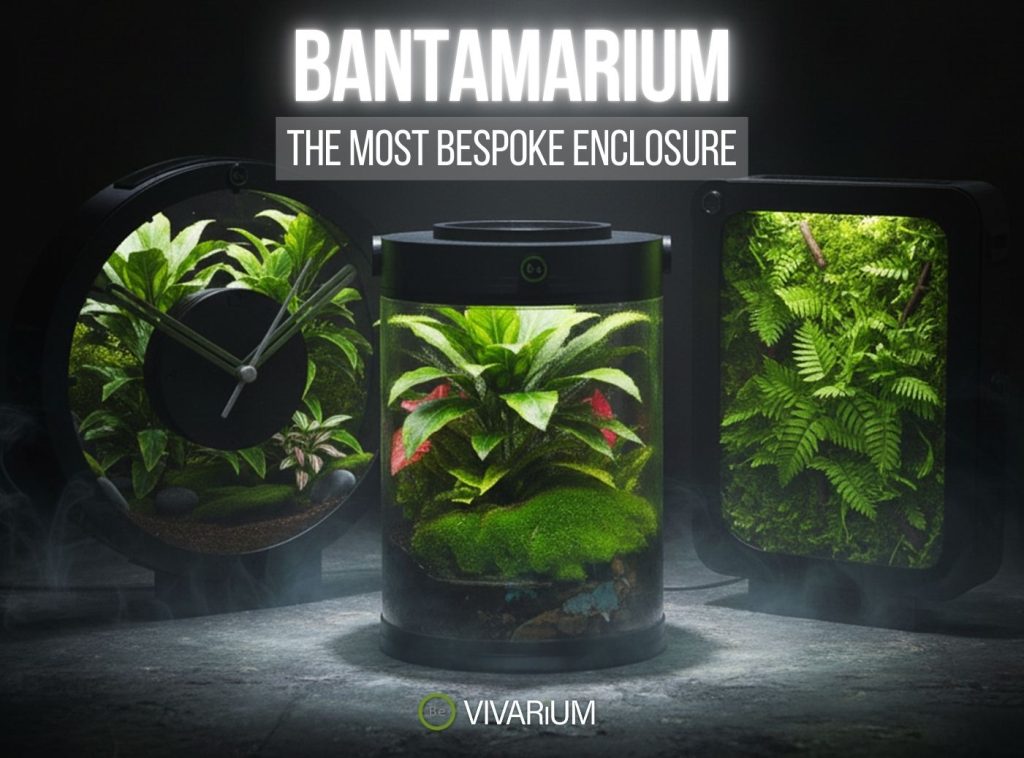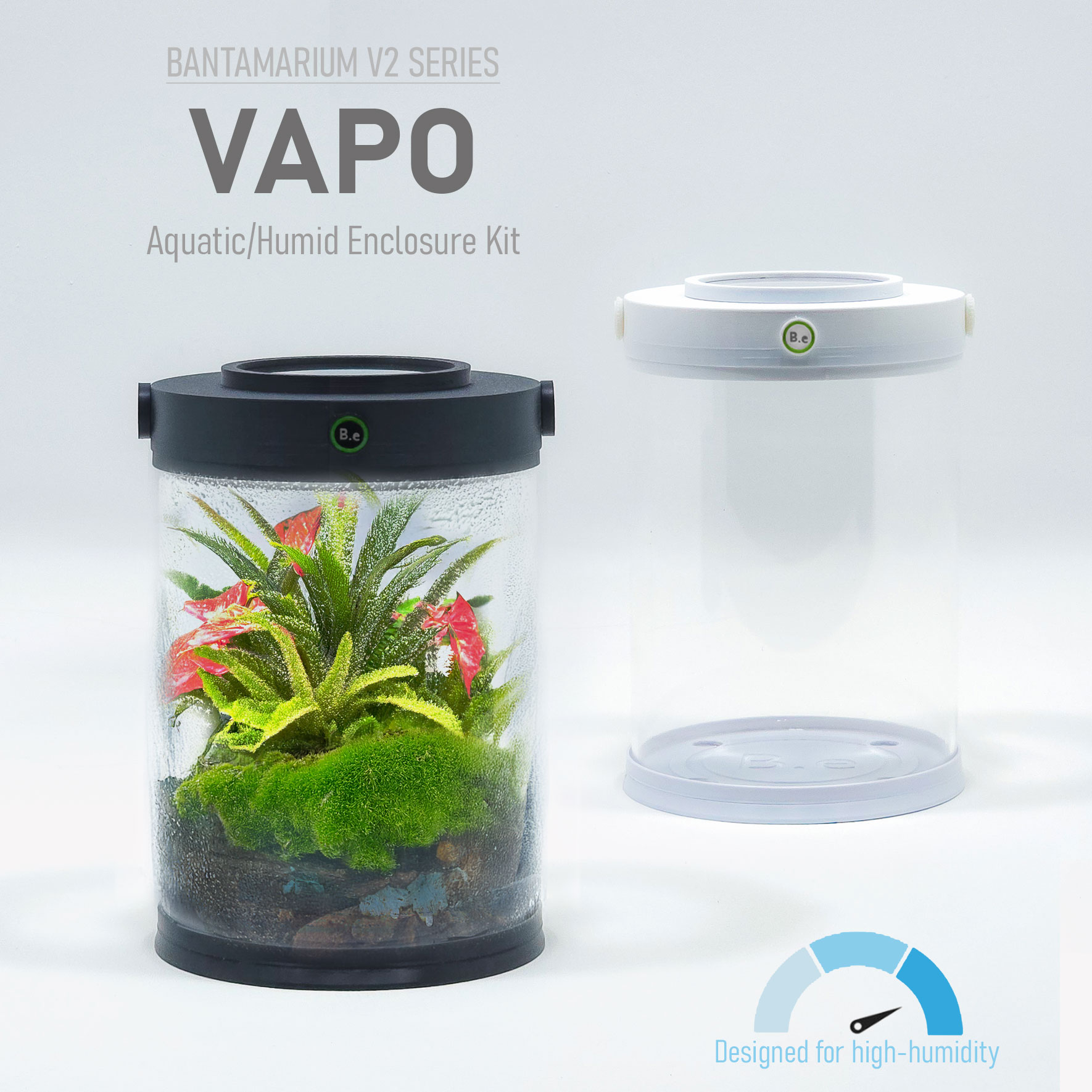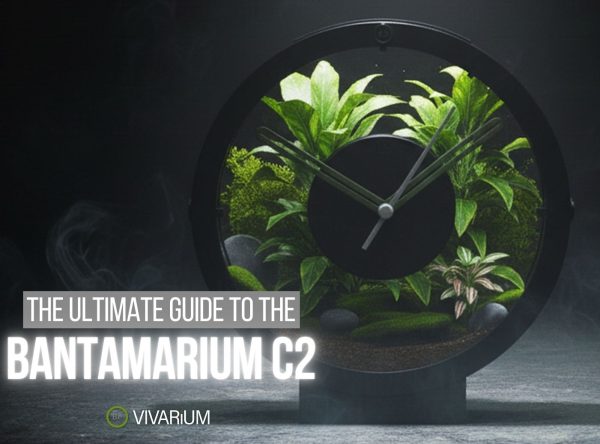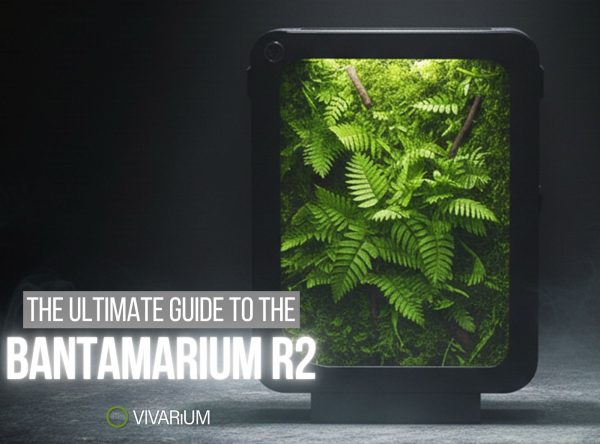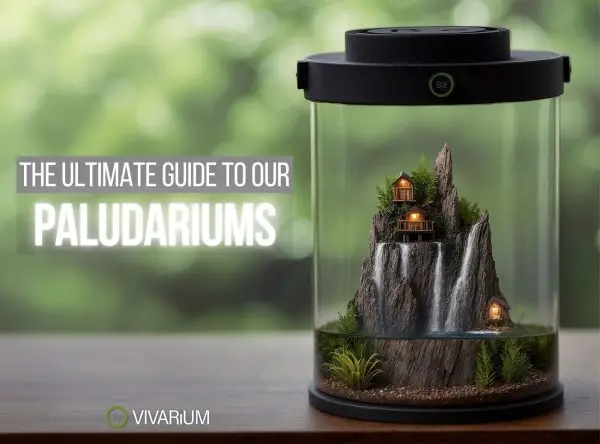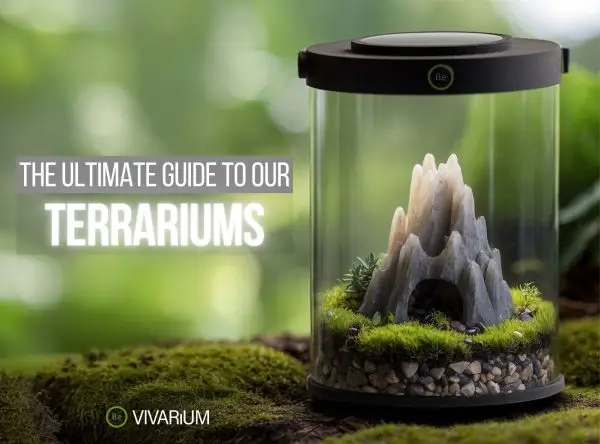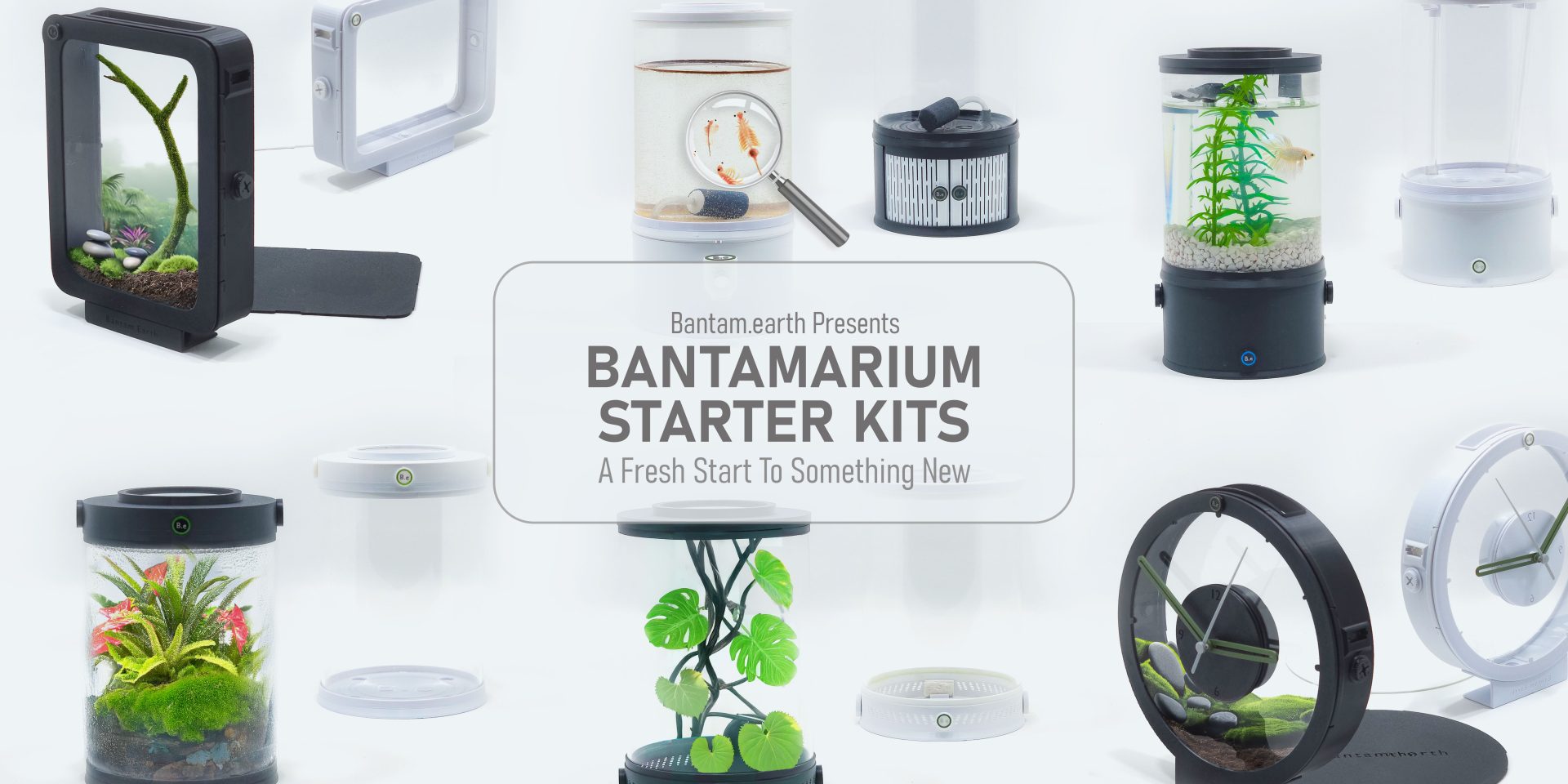There’s a unique magic to a mossarium. It’s a patch of ancient forest floor, a slice of a misty jungle, captured in miniature.
While these vibrant, emerald worlds are famously low-maintenance, creating a truly beautiful and thriving moss terrarium starts with a solid foundation of knowledge.
This guide is that foundation. We will take you through the entire process step-by-step, from choosing the right moss and substrate to the art of scaping and long-term care.
Forget the guesswork… this is everything you need to know to build a stunning, self-sustaining moss terrarium today.
Table Of Contents:
ToggleWhat is a Mossarium?
A mossarium is a specialized type of closed terrarium that is designed exclusively for growing mosses and other bryophytes, like liverworts and hornworts.
Unlike a typical terrarium that might feature a variety of plants, a mossarium focuses entirely on creating the perfect high-humidity, low-maintenance environment that allows these unique, non-vascular plants to flourish.
Because mosses absorb water and nutrients through their leaves rather than a root system, the mossarium acts as a self-contained biosphere, creating its own rain cycle that keeps the moss perpetually green and vibrant with very little intervention.
It’s the ultimate self-sustaining slice of a lush, forest floor.
Gathering Your Materials
The success of your mossarium depends on starting with the right materials. Unlike other terrariums, a moss-focused build has very specific needs for its foundation and its star players.
Here’s what you’ll need to create a healthy, vibrant, and long-lasting green world.
Choosing Your Moss
Not all moss is the same. For a thriving closed terrarium, you’ll want to choose Acrocarpous mosses (which grow in upright clumps) or Pleurocarpous mosses (which grow in a creeping, carpet-like fashion).
Look for lush, healthy pieces, and consider mixing textures for a more natural look.
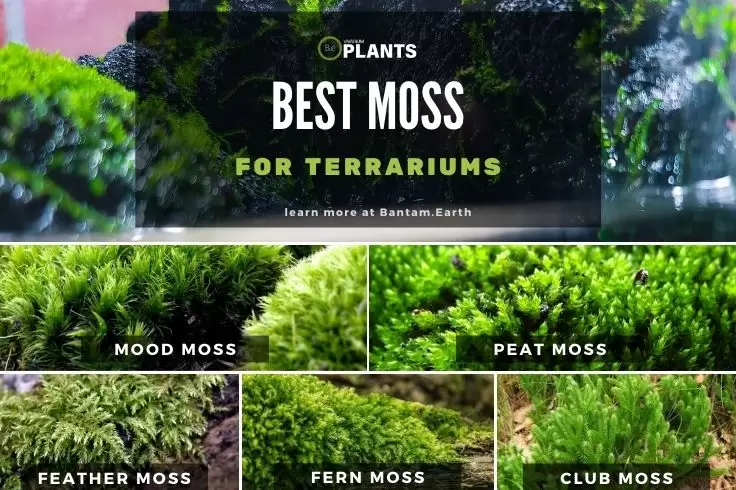

- Mood Moss (Dicranum Scoparium) – Also known as broom moss or fork moss, is a great accenting plant for critters to call home.
- Peat Moss (Sphagnum Moss) – Known for its ability to hold moisture, this moss also works well as an additive to the substrate.
- Feather Moss (ptilium Crista Castrensis) – Also known as forest moss, it works well on non-substrate surfaces like wood, brick, and concrete.
- Fern Moss (Thuidium Delicatulum) – This fluffy moss closely resembles ferns and works as a great carpeting mat for woodland-style terrariums.
- Club Moss (Selaginella Kraussiana) – Also known as Spike moss, has a very unique look bearing fern-like leaves. This moss will add an unusual aesthetic to any terrarium and can be paired nicely with leaf litter.
The Perfect Substrate For Moss
Because mosses don’t have traditional root systems, the substrate in a mossarium serves a different purpose than in a standard terrarium.
Its primary job is moisture retention. You need a base that can act like a sponge, holding water and slowly releasing it to maintain the high humidity that mosses crave.
An ideal moss substrate is a multi-part mix that is both airy and absorbent, often containing sphagnum moss, coco peat, and a material like perlite or vermiculite to prevent compaction.
While you can create your own, using a professionally formulated terrarium soil blend is the easiest way to ensure your foundation is perfectly balanced from the start.
The Perfect Enclosure
Because a mossarium is a high-humidity, self-sustaining ecosystem, the most critical choice you’ll make is the container.
It must be a sealed or nearly sealed vessel that can trap moisture and create the humid, “rainforest-like” environment where mosses thrive.
While any glass jar with a lid can work for a simple DIY project, using an enclosure that is purpose-built for the task ensures a healthier, more beautiful, and easier-to-maintain display.
*The Ideal Starter Kit*
For a truly professional and stunning mossarium, the Bantamarium V2 MINI (VAPO/Closed Terrarium Kit) is the perfect tool for the job.
We designed the VAPO core specifically for these types of builds. Its base is permanently sealed and 100% watertight, which is the most important feature for creating a stable, high-humidity environment.
This removes all the guesswork and potential for leaks. When paired with a Standard Lid and a Glass Top, the V2 MINI VAPO creates the perfect, airtight seal to lock in moisture and start the rain cycle.
For a more vibrant display, you can swap in the Light Top, which provides the ideal light spectrum to keep your moss lush and green.
How to Build Your Mossarium: A Step-by-Step Guide
This is where the magic happens. We will now walk you through the entire process of building a vibrant mossarium from start to finish.
For this guide, we’ll be using the Bantamarium V2 MINI (VAPO) as our enclosure, but these fundamental steps apply to any sealed container.
Step 1: Build the Foundation Layers
Begin by creating the essential drainage and filtering foundation at the bottom of your Bantamarium.
Add the layers in this order: first, a 1-inch layer of LECA or gravel for drainage. Second, place a pre-cut mesh barrier on top to keep the layers separate.
Finally, sprinkle a thin layer of activated charcoal to act as a natural filter and keep the environment fresh.
Step 2: Add the Substrate
Now, add your moisture-retaining substrate on top of the foundation. Gently pour in enough material to create a layer that’s 1-2 inches deep.
You can shape the substrate to create hills and valleys, which will make your final landscape look much more natural and interesting. Lightly pat it down, but don’t compact it too much.
Step 3: Scape Your World
This is the creative part. Start by placing any hardscape elements like small rocks or driftwood.
Then, take your clumps of moss and gently press them onto the substrate. You can use a pair of long tweezers or a chopstick to help position smaller pieces.
Think about creating a sense of depth by placing larger clumps in the front and smaller ones in the back. Mix different types of moss to create a variety of interesting textures.
Step 4: The First Watering & Sealing
Once you’re happy with your design, it’s time to bring it to life. Use a spray bottle or a pipette to gently water your mossarium.
The goal is to make the substrate and moss thoroughly damp, but not to create a pool of standing water in the drainage layer.
Once watered, twist-lock the Standard Lid and Glass Top into place to seal your new ecosystem.
The Art of the Mossarium
A beautiful moss scape deserves an equally beautiful frame.
While the classic V2 cylinder is a fantastic vessel, our designer series enclosures are for those who want to elevate their mossarium from a simple hobby into a breathtaking piece of living art.
These enclosures are designed to be the centerpiece of any room.
The Living Portrait: The C2 Series
The circular frame of the Bantamarium C2 RING and Bantamarium C2 HORO transforms a moss garden into a stunning, wall-mountable “living portrait.”
The unique shape creates a magical, porthole-like view into a self-contained world of green.
Imagine a vibrant, circular moss scape hanging like a piece of art in your living room, or a functional C2 HORO clock with a serene moss garden as its living face.
The C2 series is the ultimate choice for a show-stopping, minimalist moss display.
Ready to create a masterpiece?
[ ▸ Explore the C2 Series ]
The Diorama Box: The R2 Series
The Bantamarium R2 FLIP is the perfect enclosure for creating a serene, panoramic landscape.
Its rectangular shape acts as a “shadow box” or diorama stage, allowing you to build scenes with a clear sense of depth and perspective.
The Horizontal orientation is particularly well-suited for a sprawling mossy landscape, mimicking a lush forest floor.
The R2 FLIP provides the perfect frame for a tranquil and modern moss garden.
Ready to build your world in a box?
[ ▸ Explore the R2 Series ]
Mossarium Care Guide
One of the greatest joys of a closed mossarium is its incredibly low-maintenance nature.
You’ve already done the hard work; now, you mostly get to sit back and watch your miniature world thrive.
However, a little bit of attention to a few key details will ensure your moss stays vibrant and healthy for years to come.


Light
Mosses thrive in low to medium indirect light. Never place your mossarium in direct sunlight.
The glass will act like a magnifying glass, quickly overheating and scorching the delicate moss inside.
A spot on a bookshelf, a desk away from the window, or in a room with north-facing windows is ideal.
If you don’t have enough natural light, a Bantamarium Light Top provides the perfect, cool illumination to keep your moss green and healthy without the risk of overheating.
Water
This is the easy part. A properly sealed and watered closed mossarium creates its own rain cycle and may not need watering for weeks or even months at a time.
You’ll know it’s time to add water if you no longer see any condensation on the walls of the enclosure. When you do water, do it sparingly.
The goal is to keep the substrate damp, not waterlogged. Use a spray bottle or a pipette to add a small amount of distilled or rainwater, then seal it back up.
If you see excessive condensation (large water droplets constantly running down the sides), simply open the lid for an hour or two to let it air out.
Maintenance
Your primary maintenance task will be to keep the viewing panels clean. Wipe away any algae or smudges from the inside with a soft cloth to maintain a clear view.
Over time, you may need to prune your moss if it grows too dense. Use a pair of small scissors to trim any brown or overgrown patches to encourage fresh, healthy growth and maintain the look of your landscape.
If you have a bioactive setup with springtails, they will handle most of the cleanup for you by eating any mold that may appear.
Vivariums Similar To A Mossarium
The many other types of vivariums you will see out there are more than likely based on one of these core designs.
If you are building a vivarium to house a specific type of plant or animal, be sure to go with a design that closely fits their needs.
If you enjoyed this type of content, be sure to check out some of the other popular types of enclosures we’ve covered in the past:
Your Green World Awaits
There is a unique tranquility that comes from cultivating a mossarium. It’s a low-maintenance, self-sustaining slice of a forest floor that brings a sense of calm and natural beauty to any space.
You now have all the knowledge you need to build a stunning miniature world, from the foundational layers to the art of the scape. The only thing left to do is to begin your journey and create your own tiny, green escape.
Ready to build your own serene escape? Explore our complete collection of terrarium kits and supplies.
Frequently Asked Questions
A Mossarium is a type of terrarium made out of a glass container such as a jar or vase and filled with a layer of pebbles on the bottom followed by soil, activated charcoal, and living plants like moss or other small, low–growing plants. The term Mossarium is derived from the combination of moss and terrarium.
No, moss terrariums do not need soil as a foundation. Just any foundation that would be well–draining, as moss prefers moist environments. Planting substrate with a neutral pH is recommended.
Mossariums need a few basic items to get started:
- A container, like a fish tank or terrarium, is large enough to hold the plants.
- Gravel or stones for drainage.
- Sphagnum moss or peat moss for moisture retention.
- A potting mix to provide nourishment.
- A variety of living mosses.
- Terrarium decorations or markers to create an interesting design.
Moss can last many years in a terrarium if proper moisture and lighting levels are maintained.
Water your moss terrarium every two weeks. Use a spray bottle to ensure that the water is evenly distributed across the moss. Avoid standing water, as this may cause the moss to rot.
Yes, moss terrariums need sunlight. A moss terrarium will thrive in indirect sunlight and should be placed near a window. But keep in mind that too much direct sunlight can cause the moss to dry out. Artificial lighting works just as well.
Yes, it is possible to over-water a moss terrarium. You should be careful not to keep the terrarium too wet as it can lead to mold, disease, and rotting roots. To avoid overwatering, make sure to use a soil mix with good drainage and irrigate the moss only when the soil is dry. Additionally, the frequency and amount of water should be adjusted depending on the climate and season.
Yes! Charcoal is an essential part of any moss terrarium. Charcoal helps regulate the pH levels in the terrarium and removes toxins while also absorbing and filtering odor molecules. Adding charcoal to the terrarium keeps the water and soil clean, making it essential for a healthy and vibrant moss terrarium.

